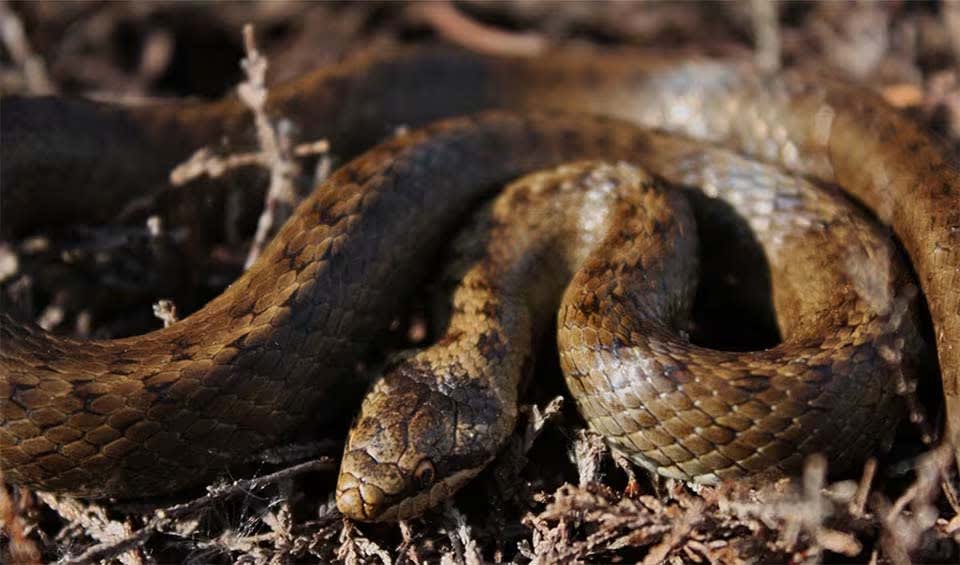A fascinating creature often found slithering through the forests and grasslands of Europe. Despite its widespread presence, this snake tends to keep a low profile, making it a less familiar sight compared to more common or strikingly colored snakes. Its name, “Smooth snake,” comes from the texture of its scales, which are sleek and glossy.
One of the defining characteristics of the Smooth snake is its subtle yet attractive patterning. Typically, its body is colored in muted tones of brown, gray, or copper, adorned with darker, sometimes almost black markings that can form a sort of net-like pattern across its back. These colors and patterns are not just for show—they provide excellent camouflage among the leaves, twigs, and soil of its natural habitat. This camouflage is crucial for its survival, helping it avoid predators and sneak up on its prey.
Speaking of prey, the Smooth snake is a skilled hunter. It primarily feeds on smaller vertebrates, such as lizards, small mammals, and occasionally birds. Unlike many snakes that use venom or sheer force to subdue their prey, the Smooth snake employs constriction. It captures its prey with stealth and speed, then coils its body around the victim to immobilize it. This method of hunting highlights its calm but effective approach to securing a meal.
Despite its predatory skills, the Smooth snake is itself non-venomous and poses no threat to humans. It is generally shy and reclusive, preferring to avoid encounters with people. When threatened, the Smooth snake may employ a variety of defense mechanisms. It might hiss or feign a strike, but more often, it chooses to flee or hide. An interesting behavior observed in Smooth snakes when threatened is their tendency to remain motionless, relying on their camouflage to blend into the surroundings rather than actively defending themselves.
Distribution
 Albania
Albania Armenia
Armenia Austria
Austria Azerbaijan
Azerbaijan Belarus
Belarus Belgium
Belgium Bosnia And Herz.
Bosnia And Herz. Bulgaria
Bulgaria Croatia
Croatia Czechia
Czechia Estonia
Estonia Finland
Finland France
France Georgia
Georgia Germany
Germany Greece
Greece Iran
Iran Italy
Italy Kazakhstan
Kazakhstan Latvia
Latvia Lithuania
Lithuania Luxembourg
Luxembourg Moldova
Moldova Montenegro
Montenegro Netherlands
Netherlands North Macedonia
North Macedonia Norway
Norway Poland
Poland Portugal
Portugal Romania
Romania Russia
Russia Serbia
Serbia Slovakia
Slovakia Slovenia
Slovenia Spain
Spain Sweden
Sweden Switzerland
Switzerland Turkey
Turkey Ukraine
Ukraine United Kingdom
United KingdomAnything we've missed?
Help us improve this page by suggesting edits. Glory never dies!
Suggest an editGet to know me
Terrestrial / Aquatic
Altricial / Precocial
Polygamous (size) / Monogamous
Dimorphic (size) / Monomorphic
Active: Diurnal / Nocturnal
Social behavior: Solitary / Pack / Herd
Diet: Carnivore / Herbivore / Omnivore / Piscivorous / Insectivore
Migratory: Yes / No
Domesticated: Yes / No
Dangerous: Yes / No




